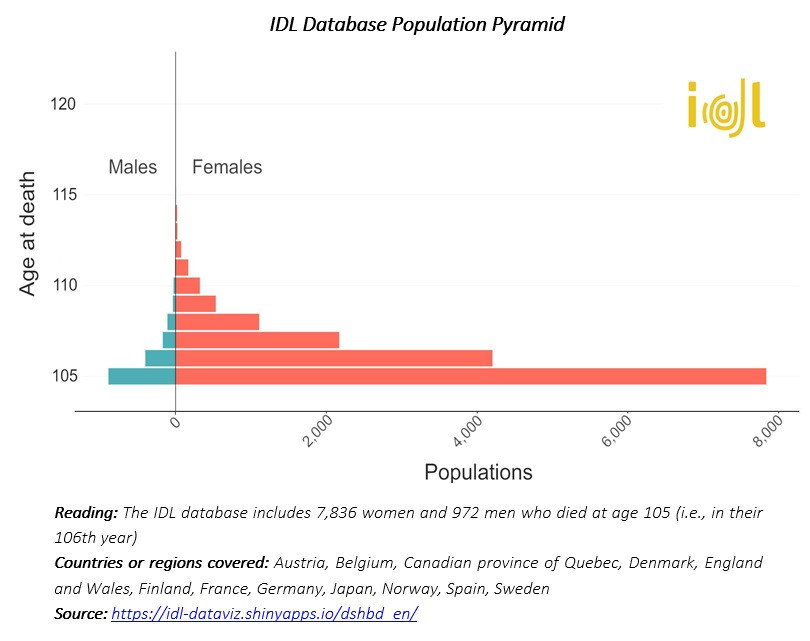INED now hosting the International Database on Longevity (IDL)
Press release Published on 31 May 2022
The IDL international database on longevity contains verified data on nearly 20,000 individuals in 13 countries across the world who lived to age 105 or older. It should ultimately allow for exact measurement of mortality at extremely old ages. INED, the French Institute for Demographic Studies, recently took over development of the base and is launching a new website—www.supercentenarians.org—complete with downloadable data and a visualization tool for rapid exploration of database contents: https://idl-dataviz.shinyapps.io/dshbd_en/.
INED took over development of IDL in 2020, and has since added several thousand individuals from France, Belgium, and England and Wales. Today the Institute is launching a new website with the updated version of the base: www.supercentenarians.org. Users can access the DataViz’ visualization tool at https://idl-dataviz.shinyapps.io/dshbd_en/.
The ages of supercentenarians (persons living to age 110 or older) are validated on a case by case basis while those of semi-supercentenarians (persons living to ages 105 to 109) are validated through samples. Each contributing nation or region provides a list of individuals to be included in IDL after validating their ages in accordance with a collectively adopted protocol. The data will enable researchers to conduct new longevity and mortality studies and should make it possible to attain an exact measurement of mortality at extremely old ages and how that mortality evolves.
IDL now provides information on individuals who died aged 105 or older from 13 countries: Austria, Belgium, the Canadian province of Quebec, Denmark, England and Wales, Finland, France, Germany, Japan, Norway, Spain, Sweden, and the United States. For each person, IDL has information on sex, date of birth, date of death, age at death, place(s) of birth and death when available, and type of information validation.
IDL guarantees data anonymity and confidentiality, ensuring that no personal identity information is accessible.
The International Database on Longevity, first hosted by INSERM (French National Institute of Health and Medical Research), then by the Max Planck Institute for Demographic Research (MPIDR), was created in 2010 under the joint scientific management of MPIDR, INED, and INSERM. It initially contained only “supercentenarians”: persons who lived to age 110 or over. In 2014, to improve measurement of mortality at extremely old ages, the database was extended to include individuals who died between the ages of 105 and 109, or “semi-supercentenarians”.









